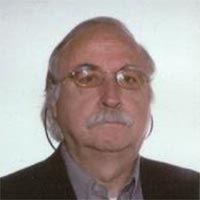Workshop on
Quantum Mechanics: Axiomatics of Measurements and connections with Computing and Information Retrieval
Satisfaction of Bell inequalities in the unsharp approach to quantum mechanics
>PRESENTATION:
Full Professor in "Dynamical System Theory" at the University
of Milano -Bicocca. From 1994 to 1997 he has been Regular Visiting Professor
at the London School of Economics, where, since 1998, he has a position
of Research Associate. From 1997 to 1999 he has been Maitre de Conferences
at the Nancy-Metz Academy, and Maitre de Conferences at la Ecole Normale
Superieure in Lyon. Coordinator of several grants on Fluid dynamics and
Cellular Automata. His research activity has been centered on Topological
Chaos, Cellular Automata, Algebraic Approach to Fuzzy Logic and Rough
Sets, Axiomatic Foundations of Quantum Mechanics, Realization of reversible
gates by quantum computing techniques.

Generalized (i.e., positive operator valued) observables
generated by a standard (i.e., projection valued) observable via suitable
confidence functions are introduced in the context of finite dimensional
Hilbert quantum mechanics. These generalized observables are considered
as unsharp realizations of the unique physical magnitude associated to
the standard realization.
We show a theorem about the "physical equivalence" (in the sense
of equal probability distributions) of the two situations "sharp
state--unsharp observable" and "unsharp state--sharp observable";
in particular, this equivalence is obtained by a nonlinear, isometric
(nonunitary) partially defined operator. A similar result for the case
of the localization observable in the case of the infinite dimensional
Hilbert space L2(R3) is given.
An application to the Bohm version of EPR experiment is given, showing
that the Clauser-Shimony description can be formulated as a "sharp
singlet state -- unsharp spin correlation observation", which turns
out to be physically equivalent to the Santos "unsharp singlet state--sharp
spin correlation observation" description. In particular we characterize,
according to P. Busch, the range of "unsharpness parametres"
in which Bell's inequalities are verified.